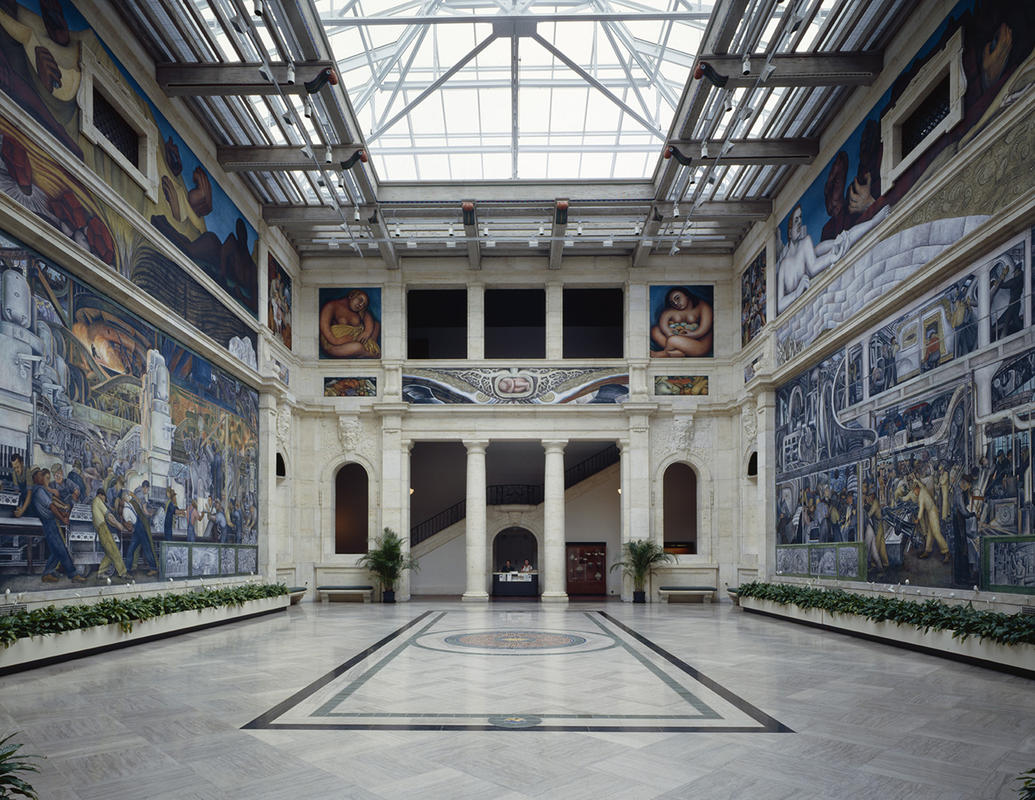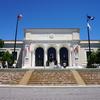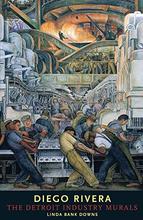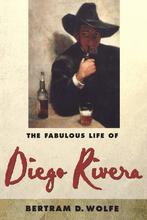More about Detroit Industry Murals
- All
- Info
- Shop

Contributor
Diego Rivera’s Marxist homage to Detroit industry.
These murals were commissioned in 1932 by capitalist Edsel Ford, the son of Henry Ford. The only rule? Rivera needed to relate the murals to the history of Detroit and the development of industry. So Diego Rivera went whole hog, painting all four walls of the Detroit Institute of Art’s Garden Court.
Rivera began painting in the midst of the Great Depression and the city’s industrial sector had taken a hard hit. At the time Rivera was first approached about the mural, thousands of unemployed workers were organizing against the Ford Motor Company. Our man Edsel was undoubtedly being strategic in his commissioning of a set of murals in honor of the workforce. Are your former employees up in arms? Pull an Edsel. Paint a mural in their honor. That’ll definitely feed the kids.
The final product is made up of 27 fresco panels which depict assembly workers of all ethnicities working side by side, a nativity scene playing tribute to medicine, several other of Detroit’s industries, some nude ladies representing fertility, and Henry Ford himself gazing god-like over the masses.
The mural’s subject matter proved to be super controversial. The nativity scene in particular, which depicts the three wise men (a Catholic, a Protestant, and a Jew) as doctors and scientists vaccinating a child, was condemned as blasphemous by religious communities. Looks like anti-vaxxers have been around longer than we thought! Those naked ladies we mentioned were deemed pornographic, and many critics claimed that Rivera had painted a communist manifesto in the midst of America’s industrial heartland. What a daring guy-- and it totally paid off. The initial controversy drew over 10,000 visitors to the museum in a single day.
For a Mexican Marxist to have painted a set of murals celebrating American industry in the midst of the Great Depression is undoubtedly contradictory. However, Edsel Ford stood in strong support of the finished work ('Let’s pretend people are still employed!') and Rivera himself considered these murals the finest works of his career.
Featured Content
Here is what Wikipedia says about Detroit Industry Murals

The Detroit Industry Murals (1932–1933) are a series of frescoes by the Mexican artist Diego Rivera, consisting of twenty-seven panels depicting industry at the Ford Motor Company and in Detroit. Together they surround the interior Rivera Court in the Detroit Institute of Arts. Painted between 1932 and 1933, they were considered by Rivera to be his most successful work. On April 23, 2014, the Detroit Industry Murals were designated by the Department of Interior as a National Historic Landmark.
The two main panels on the North and South walls depict laborers working at Ford Motor Company's River Rouge Plant. Other panels depict advances made in various scientific fields, such as medicine and new technology. The series of murals, taken as a whole, expresses the idea that all actions and ideas are one.
Check out the full Wikipedia article about Detroit Industry Murals

















